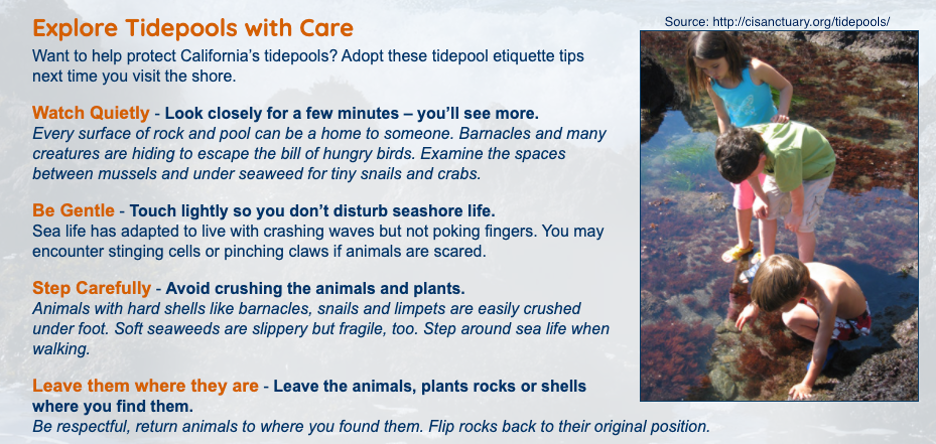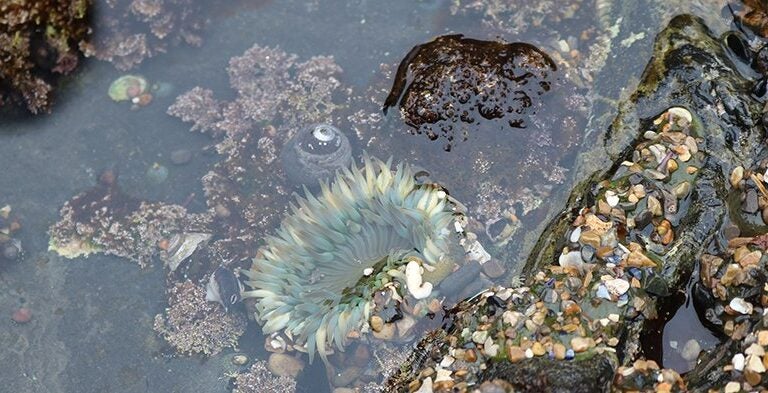
A close-up view of a healthy tidepool in Pelican Cove, located in Palos Verdes, CA.
Reflections on the Future of Tidepools
Tidepools are a place of peace, recharge, and enchantment. They serve as critical habitats for many species of marine organisms and connect or reconnect people with nature. Visitors immerse themselves in the environment as they watch the power of the waves, feel the spray, and hear the gentle tumbling of small rocks. Tidepools provide the first and often only experience for many urban residents to discover firsthand the diversity, resilience, fragility, and power of the ocean. I have been fortunate to have spent decades guiding tens of thousands of youth and families from all across the Southern California region to explore the intertidal as they expand their sense of wonder, develop respect for the ocean, and investigate life on the rocks. It has been heartbreaking to watch the filling of bucket after bucket of sea life, pried off the rocks with a range of tools (tongs, geology picks, loppers, and screwdrivers) and loaded into vehicles.
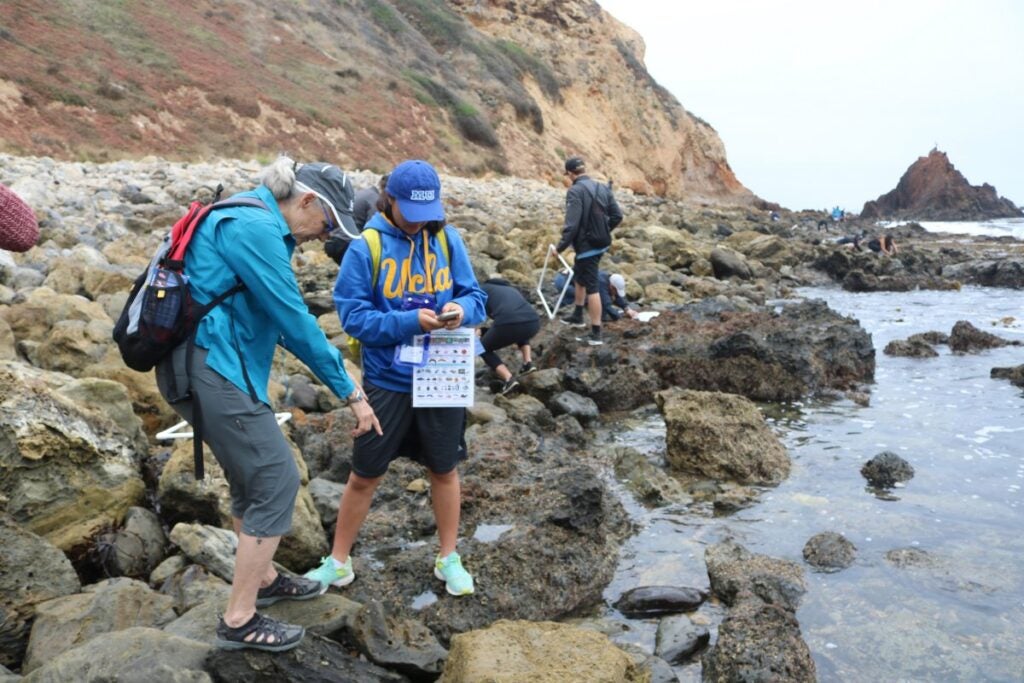
Tidepools are an essential habitat, providing food for many organisms, supporting shorebirds and birds along the pacific flyway, and serving as nurseries for organisms that move to the kelp forest such as abalones, lobsters, and fish. They are buffers that prevent erosion of the shoreline, and so much more. If we lose this biodiverse habitat and highly valued ecosystem, what are the ripple effects on other surrounding and dependent ecosystems? What happens for youth exploring their place in nature and developing wonder in these special places? While looking at the ecological effects, we must also look at socioeconomic factors.
In California, the coast is a resource shared by all residents and managed by the state. To take any tidepool organisms, a fishing license is required. All residents, 16 years and older, can purchase a fishing license and with that license are responsible for following regulations. They may harvest marine life from the rocky intertidal or tidepool areas. Mussels, urchins, and snails are choice seafood consumed by many; however, there are daily limits and protected areas that prohibit any take. Even if everyone stays within the guidelines, the sea life of the tidepools cannot in any way meet the demand for seafood from the population or even a fraction of the population of the Los Angeles region.
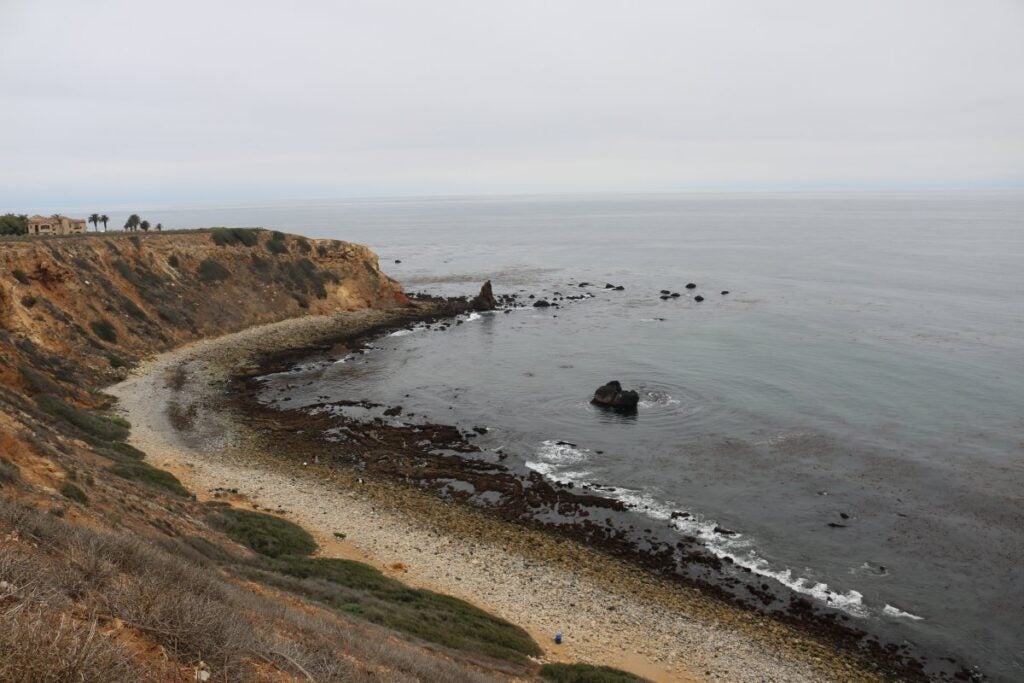
rocky shore and consists of several tidepools.
In these current times with loss of jobs, uncertainty, and the need to find food for the family, using one’s own hands to collect food is something many have found as a way to spend time outside, enjoy the ocean and go home with a meal to share. This sense of hope and joy of making it through another day or week with something positive to share is so critical, but at what cost? Do the benefits outweigh the costs? Who decides the value of these areas?
The conundrum of how to solve this question needs to be addressed. This is an issue that overlaps policy, research, education, and management of ecosystems while taking into account societal factors. This level of harvesting wasn’t predicted and we are now starting to see the effects. Many of these tidepools both inside and outside of marine protected areas have been monitored for decades. Following data collection protocols, we will be able to see if and how these fragile ecosystems recover from loss due to an overabundance of taking, while also being impacted by climate change stressors. Will they recover for future generations? How do we learn and adapt management practices?
How do we protect these ecosystems for future generations? In this time of reflection and change, do we reevaluate current state regulations and resource allocation to protect all intertidal habitats including marine protected areas? How do we build a greater connection for the natural world within our extensive urbanized environment? It is possible to increase our education and management of these areas to create an ethos of stewardship in our communities. In order to do this, we must recognize and value our role as stewards when we access resources, remembering to do so in a respectful way that ensures ecosystem survival and resources for generations to come, a practice that has been shared from generation to generation within indigenous communities across Southern California. Can we learn from practitioners of traditional ecological knowledge and apply these practices to our lives in order to help protect these vital ecosystems?
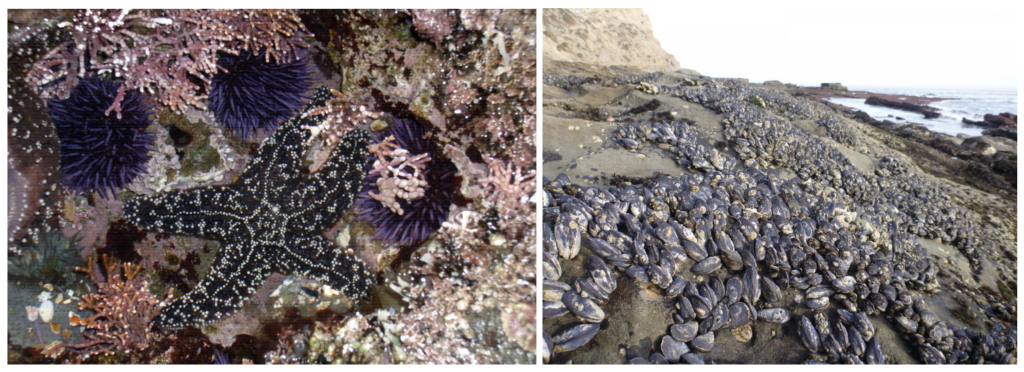
Resources to Help Learn About and Interact With Tidepools
Life at the interface between land and sea: the importance of California’s rocky shores.
Rocky shores help researchers by playing a large role in understanding the impacts of environmental shifts and changing climate on oceans.
Learn about ocean etiquette and how to have responsible encounters with marine wildlife and their natural habitats.
Snapshot Cal Coast: engage in citizen science by taking photos of tidepools to help scientists learn about their changing populations.
Youth Activity Guides: The Marine Protected Area (MPA) Collaborative created a Coastal Explorer Guide that provides activities to educate its readers on MPAs, wildlife, ocean safety, recreational opportunities, and more. They also have a coloring book. Both activities are offered in English and Spanish versions.
LA Time’s article on how crowds removing sea creatures from San Pedro tidepools are putting delicate ecosystems at risk. Published 7/17/2020
